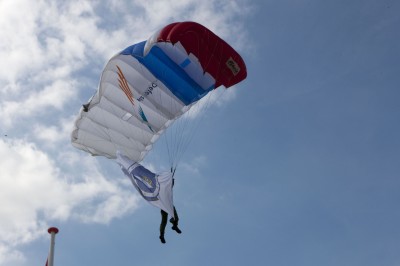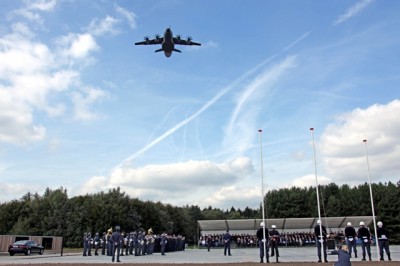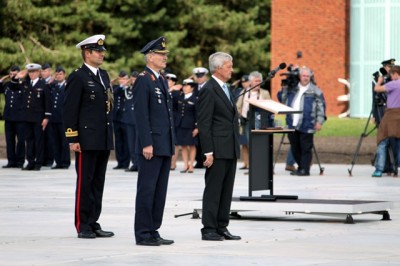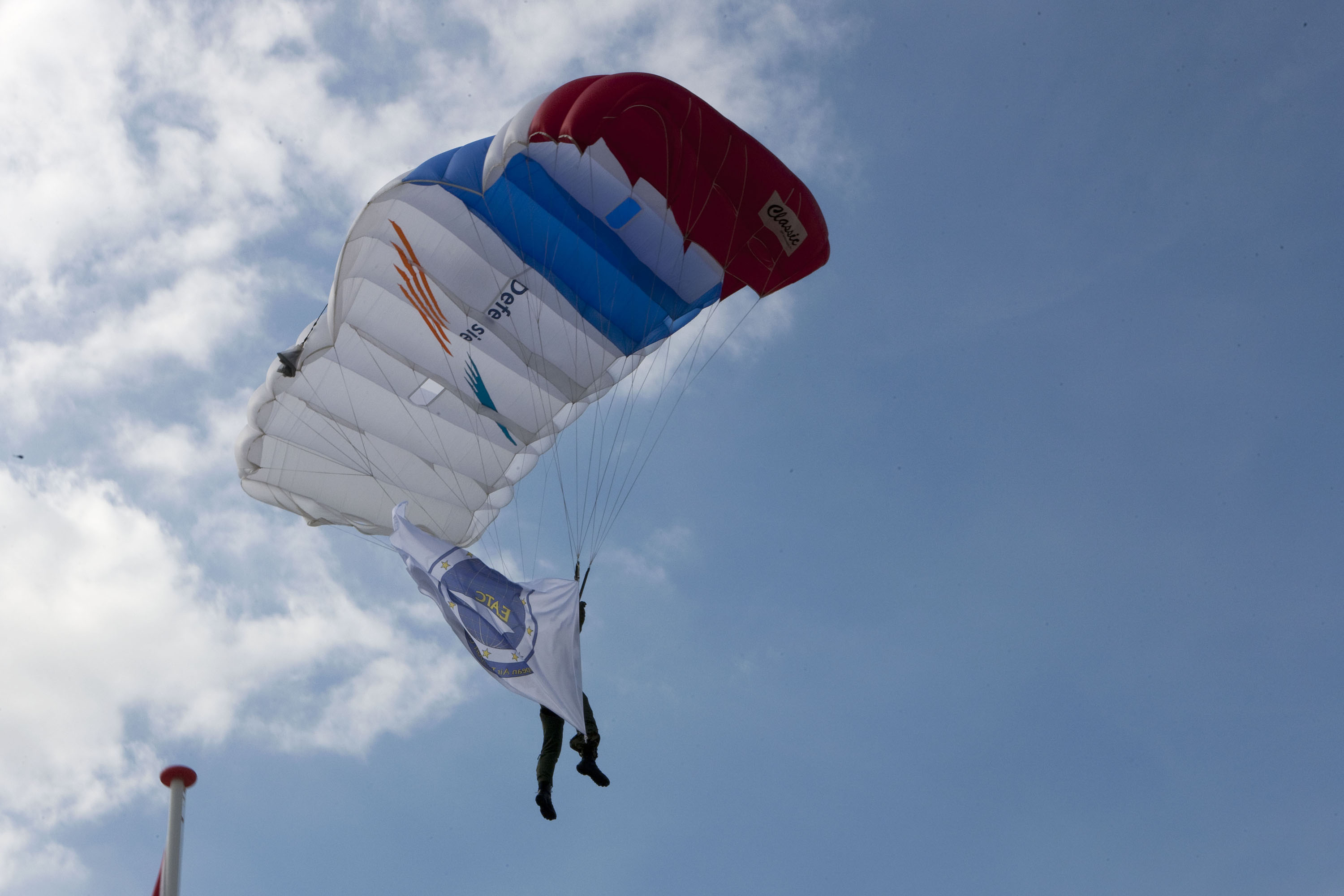Air Command EATC inaugurated in Eindhoven

(BRUSSELS2) A parachute jump, with flags of the participants, a flight of a C130 Hercules, a C160 and even... an Airbus A400M, an audience of 200 senior officers, several ministers... the Dutch government will not have nothing neglected to open, with fanfare (literally and figuratively), the new “European Air Transport Command” at Eindhoven airport (Netherlands) on September 1 (1).
For the Dutch Minister of Defense, Eimert van Middelkoop, who chaired the ceremony, with the EATC, the transport and refueling planes of the Netherlands, Belgium, Germany and France will be “now under one command“. This merger should allow “better coordination and efficiency of more than 200 military aircraft“. Not all of them will be based in Eindhoven. They will operate from their usual base in different airports in Europe… or elsewhere. This commandment also aims to “the development of a common training and training doctrine“, just like to agree on standard standards and maintenance of the fleet.

This new system responds to the Helsinki Headlines goals aimed at strengthening “EU capacity to deploy force groupings at short notice in response to a crisis, either as a stand-alone force or as part of a large-scale operation".
"This is the opening of a new military collaboration in Europe to the extent that the participating countries will remove part of their existing structures and delegate their respective skills to a single shared command.” specifies an internal note at EATC.
Composition of the fleet, personnel and budget key
The fleet controlled by EACT will include: 29 C-130 Hercules aircraft (Belgian, French, German, Dutch), 135 Transall C-160 aircraft (French and German), 19 CASA 235, 10 Airbus A-310, 2 Airbus A340, 2 KDC-10 planes (Dutch), 1 DC-10 and 20 VIP planes (like the Dutch Gulfstream IVs). Ultimately, it should also include Airbus A400Ms (once they are delivered to the armed forces). In terms of nationalities, there will be 80 German planes, 60 French planes, 20 Belgian planes (the entire Belgian fleet), 10 Dutch planes.

The EATC will be led by German General Jochen Both. At least to start. Because command will be provided alternately by French and Germans.
The EATC team, once complete, of around 150 military personnel, coming from the four “founding” countries (65 Germans, 45 French, 25 Dutch, 20 Belgians). Other European countries — like “Spain and Luxembourg, would be interested in participating in the EATC” specified the Minister.
Initial operational capacity is planned for December 2010 at the latest; full operational capability by July 2013.
Funding will be provided by the participating Member States according to a budget distribution key set at: 38% for Germany, 35% for France, 14% for the Netherlands, 13% for Belgium. The Netherlands is responsible for hosting EATC personnel, in particular to facilitate access to civilian housing for families (some housing may be opened at the Eindhoven air base, on a temporary basis). On the other hand, the European Commission has – apparently refused to welcome the children of the military – at the European school in Mol, 50 km away.
Commentary: a tool for crisis response, both civilian and military
It can be noted that, with the EATC, Europe has a new crisis response capacity, whether it is a strictly military operation, peacekeeping or a more civilian mission. disaster relief or evacuation of citizens. It seems surprising to me that in certain corridors of the European Commission or the European Parliament we continue to talk about a necessary “European civil protection force” without mentioning the birth of this EATC which resolves an essential, and often crucial, point. in the event of a disaster: rapid and secure delivery of the first relief items and equipment (in general, personnel, materials and other relief items are already available in the Member States).
Of course, the khaki color of the devices could be off-putting. But it should not be so difficult to ask to always have a plane, painted white, with European weapons ready to go. For a relatively low cost, the European Union could thus equip itself with this rapid reaction force in terms of civil protection. Of course, it's not that simple, formidable managers will no doubt explain to me, there are a series of legal, financial and administrative questions to resolve. No doubt... But with a (small) political impulse (and a will), a little interest in the question rather than a cleverly organized ignorance would undoubtedly make it possible to transform problems into a more open discussion.
Incidentally, let us note that the High Representative will thus have a fleet of VIP planes not at will but within reach... So the April Fools (2) are starting to come true.
(Nicolas Gros-Verheyde)
Read also:


Comments closed.